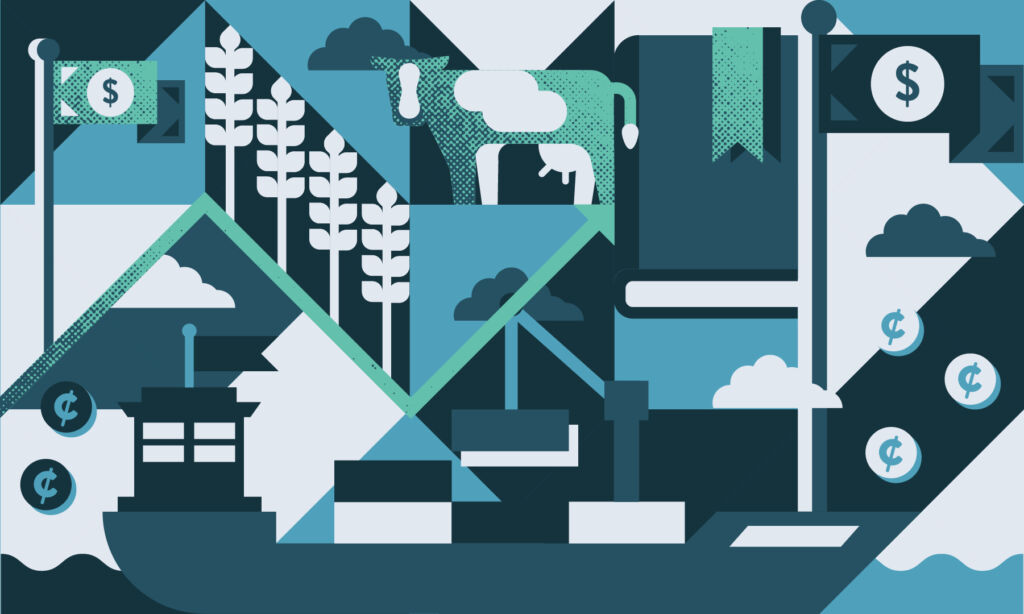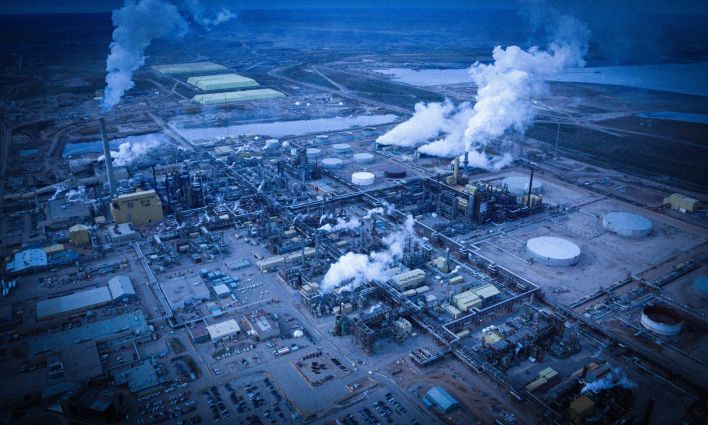Canadian efforts to counter forced labour in global supply chains made headlines this week, as the government stopped a contract with a Malaysian company accused of abusing foreign workers in its plants.
On January 18, Canada terminated two health-sector-grade rubber glove supply contracts worth $222 million with the Malaysian company Supermax Healthcare Canada. From reports as far back as 2013 and 2014, we’ve known the company employs migrant workers under abusive terms, including high “recruitment fees,” the confiscation of passports, long hours, and overcrowded living accomodations.
Still, it took the Canadian government nearly a year to arrive at its final decision after initially giving Supermax a pass. In January 2021, the government asked six Malaysian glove suppliers, including Supermax, to provide their own assessments on due diligence, practices, and policies they were conducting to avoid forced labour. The companies complied, and Canada took no further action.
“Eleven months later, however, Public Services and Procurement Canada abruptly changed course, pausing deliveries from Supermax to the government in November and calling for an independent audit of the company’s Malaysian operations, based on International Labour Organization (ILO) standards. Soon after, the contract was terminated. It is not clear how this will impact imports from Supermax to other customers in Canada, which could still be permissible.
This somewhat surprising about-face could mark an important shift in Canadian policy. Prior to this week, Canada’s policy was to only stop imports due to allegations of forced labour if it possessed "legally sufficient and defensible evidence." Now, Canada appears to be acting on “reasonable indication” of labour violations—a lower, more commendable, and potentially more effective bar.
But the turnaround also raises concerns about Canada’s real commitment to eradicating forced labour. Why did Supermax get a pass in 2021 but not in 2022? What changed during this time to spark such different responses?
Following the U.S. lead
While numerous arguments will emerge around the sudden shift in Canadian policy, one major factor almost certainly has to be the increasingly assertive position of the United States. Given the amount of time and energy that the Canadian government spends patting itself on the back over its “progressive” trade approach, one could be forgiven for not realizing that it is the U.S., not Canada, that has taken a lead on issues of forced labour and global trade.
Looking at the case of Supermax, we can speculate that Canada was heavily influenced by the decision of U.S. Customs and Border Protection (CBP) to seize shipments of latex gloves from the company in October 2021, just a few weeks before Canada changed its own position. The U.S. was acting on the basis of a reasonable indication of the use of forced labour, including evidence the company is withholding identity documents and wages, and the presence of abusive working and living conditions.
The same criteria were applied to U.S. decisions to hold up shipments in 2020 over allegations of forced labour at Sime Darby Plantation BhD, one of the world’s largest palm oil plantation companies, and Top Glove Corp., whose gloves were eventually allowed into the U.S. after a one-year ban, based on steps to address the allegations.
These steps are not isolated events; they represent escalating measures on the part of the U.S., which scores well in global rankings on combating forced labour. According to the human rights group Walk Free, in 2019, the U.S. ranked third out of 183 countries as having taken the most action to respond to modern slavery. Canada ranked 37th on the same list.
The election of Joe Biden in 2020, on a pledge to focus on “worker-centred trade policy,” has given further impetus to initiatives aimed at stopping forced labour. Efforts have been spearheaded by the United States Trade Representative (USTR) Katherine Tai, who has criticized past trade policies for neglecting workers, at home and abroad, in global supply chains.
Under Tai, the U.S. has become increasingly assertive on forced labour. Most notably, the Canada–United States–Mexico Agreement (CUSMA), which came into effect in 2020 as a replacement for NAFTA, explicitly prohibits forced labour in Article 23.6, stating that: “each Party shall prohibit, through measures it considers appropriate, the importation of goods into its territory from other sources produced in whole or in part by forced or compulsory labor, including forced or compulsory child labor.”
In theory, then, the U.S., Mexico, and Canada appear to have banned the import of any and all goods produced using forced labour. But, as is so often the case with international obligations, actions speak louder than the legal text. Until recently, there was very little action. This is where the U.S. actions banning shipments, followed closely by Canada, become important measuring sticks.
In addition, the U.S. has indicated growing concern for issues of forced labour in multilateral trade negotiations. At the World Trade Organization (WTO) in 2021, Tai stated that the U.S. wanted language on forced labour to be included in the 20-year-long negotiations on harmful fisheries subsidies. While the draft text includes obligations of WTO members to report illegal, unreported, and unregulated fishing (IUU), the U.S. has insisted on additional language requiring countries to report on vessels where there is a reasonable indication of forced labour.
The U.S. position comes with its own substantial weaknesses and contradictions. It is not clear, for instance, how reporting obligations in the fisheries negotiations would result in tangible gains or improvements.
The same is also true for the U.S.’ relatively high ranking by Walk Free, which reflects action and resources devoted to the issue, but not necessarily good outcomes, considering how poorly the world has responded in general. Within the U.S., it is estimated there are over 400,000 people living in conditions of “modern slavery,” a number that combines both forced labour and forced marriages where there is no consent.
Making up for lost time
However important the new steps by the U.S. and Canada are to counter forced labour abroad, ultimately, they reflect how ineffective efforts have been to this point. Most forced labour legislation simply lacks teeth, enforcement, or effectiveness. Transnational corporations have been more than happy to fill the void with voluntary codes while continuing to benefit from global supply chains that exploit forced labour and channel profits into the hands of wealthy investors.
According to the ILO, in 2016, there were 24.9 million working under “forced labour,” unable to refuse work under threat of violence or intimidation. They work, in particular, in domestic work, construction, agriculture, forced sexual exploitation, and state-imposed labour. Women make up the majority of the victims of forced labour.
While the highest number of cases occur in Asia and other Pacific countries, followed by Africa, Europe and Central Asia, it is common throughout the globe. Again, according to the ILO, forced labourers have regularly “produced some of the food we eat and the clothes we wear, and they have cleaned the buildings in which many of us live or work.” Some of the global imports most at risk of having forced labour involved include computers and mobile phones, garments, fish, cocoa, and sugarcane.
According to Walk Free, while governments have increasingly adopted legislation aimed at curtailing forced labour, supporting survivors, strengthening criminal justice mechanisms, improving intergovernmental coordination, and addressing risk factors, very little has been done to eliminate forced labour from global supply chains. In 146 countries, there is no legislation to explicitly stop government and business from sourcing goods and services produced by forced labour, and most countries, including Canada, score very low in this category.
Mist of uncertainty
The ineffectiveness of existing initiatives and actions to address forced labour have no doubt been one of the factors spurring action on the part of human rights organizations, which have put increasing pressure on governments to respond.
Under pressure from human rights groups in Canada, led by World Vision, Fairtrade Canada, UNICEF Canada and Save the Children, the government has tabled a Modern Slavery Act, which, if passed, would require corporate reporting and further prohibit the importation of products produced by forced or child labour. Canada has also signed on to the 2014 ILO Protocol on Forced Labour, a step the U.S. is still considering.
Canada’s actions with Supermax can, in this context, be seen as part of a slow but growing effort to take the issue more seriously than in the past, and to live up to its global commitments—even if it has, ultimately, required action on the part of the U.S. to spur the government on. Canada should be leading the way, not following in other countries’ footsteps.
Correction: A previous version of this article stated that Public Services and Procurement Canada (PSPC) halted imports from Supermax in November 2021. Instead, PSPC paused deliveries from Supermax to the government. It is not yet clear how this will impact imports from Supermax to other customers in Canada.







